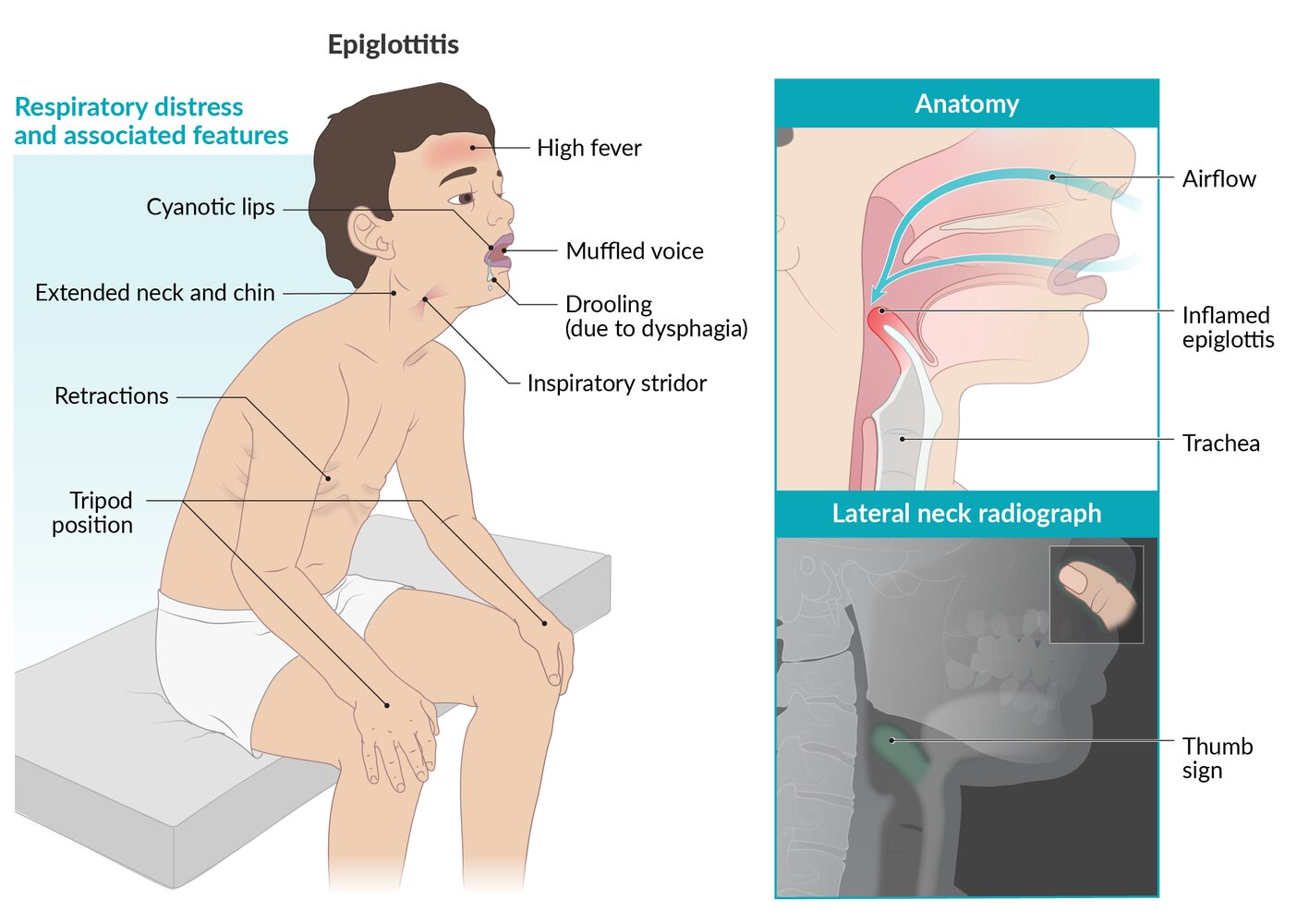Clinical Manifestations of Epiglottitis
- The clinical manifestations of epiglottitis are usually sudden and severe. They include:
- High fever (>38°C or 100.4°F)
- Severe sore throat and dysphagia (difficulty swallowing)
- Drooling and inability to handle secretions
- Muffled or hoarse voice and stridor (high-pitched sound on inspiration)
- Respiratory distress and tachypnea (rapid breathing)
- Tachycardia (rapid heart rate) and hypotension (low blood pressure)
- Anxiety, agitation, and restlessness
- Cyanosis (bluish discoloration of the skin and mucous membranes) and pallor (pale appearance)
- Tripod position and use of accessory muscles to breathe
- The clinical manifestations of epiglottitis can vary depending on the age of the child, the degree of airway obstruction, and the presence of complications. Some children may have a more gradual onset of symptoms or present with atypical features, such as cough, wheezing, or abdominal pain.
- The clinical manifestations of epiglottitis can also mimic other conditions that cause upper airway obstruction, such as croup, foreign body aspiration, retropharyngeal abscess, or anaphylaxis. Therefore, it is important to differentiate epiglottitis from these conditions based on the history, physical examination, and diagnostic tests.

Nursing Test Bank
Naxlex Comprehensive Predictor Exams
Questions on Clinical Manifestations of Epiglottitis
Correct Answer is C
Explanation
Correct Answer is C
Explanation
Correct Answer is ["A","C"]
Explanation
Correct Answer is D
Explanation
Correct Answer is C
Explanation
Correct Answer is D
Explanation
Correct Answer is D
Explanation
Correct Answer is ["A","D","E"]
Explanation
Search Here
Related Topics
- Stages of physical, cognitive, social and emotional development from infancy to adolescence - Common Pediatric Conditions
- Developmental milestones and screening tools - Common Pediatric Conditions
- Factors affecting growth and development - Common Pediatric Conditions
- Interventions to promote optimal development - Common Pediatric Conditions
- Conclusion - Common Pediatric Conditions
More on Nursing
Free Nursing Study Materials
Access to all study guides and practice questions for nursing for free.
- Free Nursing Study Trials
- Free Nursing Video tutorials
- Free Nursing Practice Tests
- Free Exam and Study Modes
- Free Nursing Revision Quizlets
